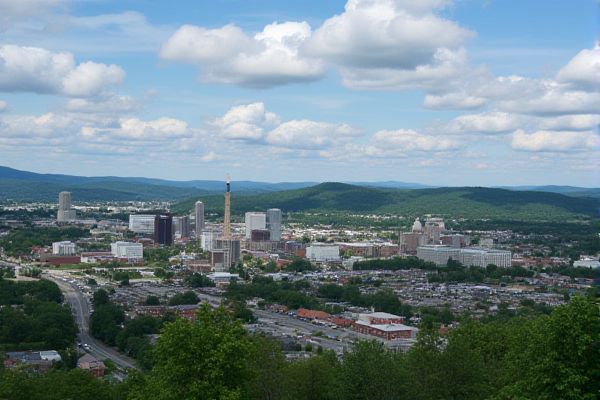
Weather and climate in New Hampshire: Cold, snowy winters. Warm, humid summers. Four distinct seasons. Fall foliage season. Coastal nor'easters. Variable mountain climate. Spring mud season. High precipitation variability. Frosts possible in May. Influenced by Atlantic Ocean.
Cold, snowy winters
New Hampshire traditionally experiences cold, snowy winters complete with significant snowfall, snowy landscapes, and recreational opportunities. However, the impacts of climate change are increasingly evident, as the region faces warmer temperatures, reduced snowpack, and earlier ice melt, with average winter temperatures significantly rising since the 1980s. This shift is critical as it affects not only winter recreation but also wildlife habitats and local economies. The delicate balance of ecology in this region is being tested, with increasing precipitation falling as rain rather than snow. To understand more about these changes and their implications on wildlife, you can explore how Climate Change impacts seasonal shifts, shedding light on important ecological transformations within New Hampshire. As temperatures continue to rise, the traditional winter characteristics of cold, snow, ice, and high winds could become more elusive, altering the natural and economic landscape of New Hampshire.
Warm, humid summers
New Hampshire experiences warm, humid summers, with average daytime highs in the mid 70s°F to low 80s°F (24-28°C) throughout the state in July, and overnight lows in the mid 50s°F to low 60s°F (13-15°C). For more detailed information about its climate and other geographical features, you can visit the Wikipedia page dedicated to New Hampshire. This combination of warm days and cooler nights makes it an ideal place for those who enjoy a moderate summer climate.
Four distinct seasons
New Hampshire experiences four distinct seasons: winter, characterized by cold and snowy conditions; spring, with variable temperatures and precipitation; summer, marked by warm and humid weather; and fall, known for its mild temperatures and vibrant foliage. For more detailed information on the state's climate, you can visit the New Hampshire Weather page to explore seasonal patterns and weather trends in depth.
Fall foliage season
New Hampshire's fall foliage season typically runs from late September in the north to early November in the south, with peak colors usually occurring around early October, especially in the White Mountains. The season's vibrancy is influenced by factors such as sunlight, rain, and cool nights, with the overall outlook for 2024 indicating healthy forests and a seasonable fall pattern. For more detailed information, you can visit the New Hampshire Foliage Planner.
Coastal nor'easters
Nor'easters in New Hampshire are powerful storms that form along the East Coast, typically between September and April, bringing heavy rain or snow, strong northeast winds, and the threat of coastal flooding. The most severe impacts usually occur in the winter months, affecting the heavily populated I-95 Corridor, including areas around New Hampshire. For more detailed safety information and tips on how to prepare for these significant weather events, visit the National Weather Service's Nor'easter Safety Page.
Variable mountain climate
New Hampshire's mountain climate, particularly at Mount Washington, is characterized by significant variability and changing trends due to climate change. The summit of Mount Washington is warming at a rate of 0.18 degF per decade, with spring warming the fastest, and the area is experiencing fewer frost and ice days, along with an increasing growing season, despite being buffered from the rapid warming seen at lower elevations. For more detailed insights, the analysis conducted by the Mount Washington Observatory reveals how these changes have become statistically significant, emphasizing the urgent need for adaptive strategies to tackle these evolving climatic challenges.
Spring mud season
Spring mud season in New Hampshire, occurring roughly from March to May, is characterized by thawing ground, saturated soil, and deep frost, leading to muddy roads and trails due to the slow drainage of water as the top layer of soil thaws while the lower layers remain frozen. This period is exacerbated by cold winters with heavy snowfall and a chilly spring, which delays the budding of plants and proper drainage of roads and trails. For more insights on how to navigate this season, visit the comprehensive guide on Granite Post News for detailed strategies and activities.
High precipitation variability
New Hampshire experiences high precipitation variability, with total annual precipitation having increased by 6.8 inches since 2005 compared to the 1895-2004 average. The state has seen an increase in extreme precipitation events, particularly during the 2005-2014 period, and is projected to continue seeing rises in annual average precipitation and the frequency of extreme precipitation events, especially during winter and spring. For more detailed insights, visit the State Summaries site.
Frosts possible in May
Frosts are possible in May in New Hampshire, as the average temperature in May is around 15.57°C (60.03°F), which can still drop to lower temperatures, especially in the early morning hours. For more detailed climate data, you can visit the website Weather and Climate to explore further insights on the weather patterns across the state.
Influenced by Atlantic Ocean
New Hampshire's weather and climate are significantly influenced by the Atlantic Ocean, which provides a moderating and moistening effect, especially in the southeastern parts of the state. This influence leads to more variable weather patterns, with frequent precipitation due to storm tracks associated with the jet stream, and warmer temperatures in coastal areas compared to the northern and western regions. For more detailed information, please visit the State Summaries website.
